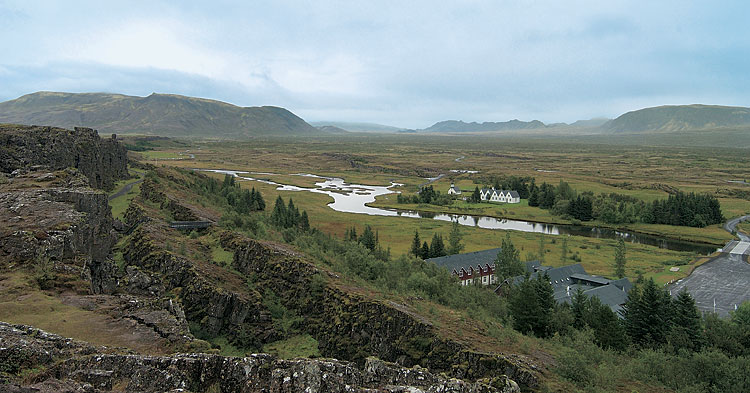Iceland: Reykjavik and the Golden Circle

On the basis of its name, you'd expect Iceland to be swathed in snowdrifts and its shores locked in a frozen sea. But thanks to the warming influence of the Gulf Stream's ocean currents, the coarsely serrated coastline that looms through swirling clouds in the window of my Icelandair Boeing 757 appears mostly green.
Southwest Iceland may be short on ice in early September, but rain it has aplenty. The same warm currents that modify its temperature (mainland Iceland's northern tip is minutes from the Arctic Circle) carry moist air that drops its soggy cargo over the island. But the forecast promises a brighter tomorrow and two dry days following. Time to ride!
I have three days to explore the area around Reykjavik while my wife presents a training program at the university. Cheryl's contact there, Guthrun Hognadottir, kindly introduces me (everyone seems to know everyone else) to Frank Pitt, the local Fiat, Alfa, and Ducati distributor. Immigrants are required to adopt an Icelandic name on acquiring citizenship, but Frank's unusually Anglophonic name is a result of being born here. His British father was stationed in Iceland during WWII, then he married and settled here.

Frank has generously offered to lend me his demonstrator and personal ride, a fully tricked out S4R Monster with Termignioni pipes and carbon fiber everything. He also suggests I hook up with the Ducati club for their Thursday night ride as he hands me the keys. That would be nice, I muse, anticipating a relaxing twilight ride around the city, ending up at a coffee bar. But there are sights to see first.
Blue Lagoon
Close to Keflavik International Airport and an easy 50km ride from the center of Reykjavik, is the famous Blue Lagoon, a vast, eerily fluorescent turquoise lake spread over a lava field. Rather than a natural phenomenon, the lagoon was created accidentally by a nearby geothermal generating station. The plant extracts heat from underground geothermal salt water, then deposits the partially cooled brine on the lava field. Precipitating salts have sealed the cracks in the lava bed, creating a mineral rich, 100-degree Fahrenheit lagoon, which gets its characteristic color and density from blooms of blue-green algae and a fine silt of silica. It sounds less than exotic, but devotees praise its health-giving benefits, smearing the white silica "mud" that settles around the pool over their skin as an astringent. Standard access costs around $ 42 in the winter and $ 53 in the summer. Pre-booking is required.
As I approach the lagoon on Highway 43, swirls of steam drift across the crusty, charcoal-colored lava, and I stop to scramble over the crags for a better view. The pastel-blue lake seems to glow, casting spooky luminescence on the drifting steam clouds. Iceland, I learn, sits on the junction of the separating North American and European tectonic plates, and it's the resultant geophysical stress that causes so much volcanic and thermal activity. So next, I ride toward the line where the plates actually conjoin, Iceland's own "San Andreas Fault."